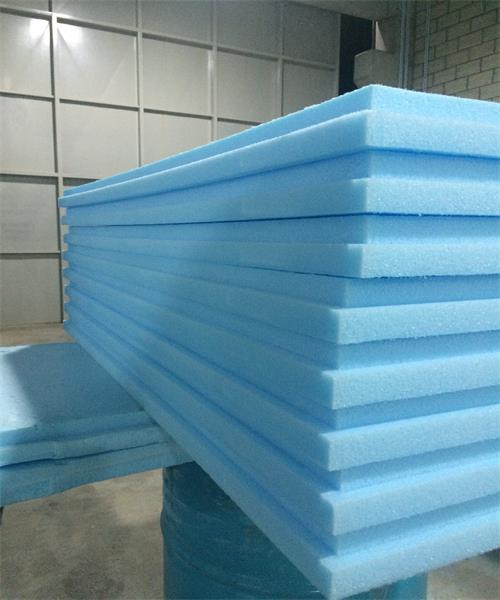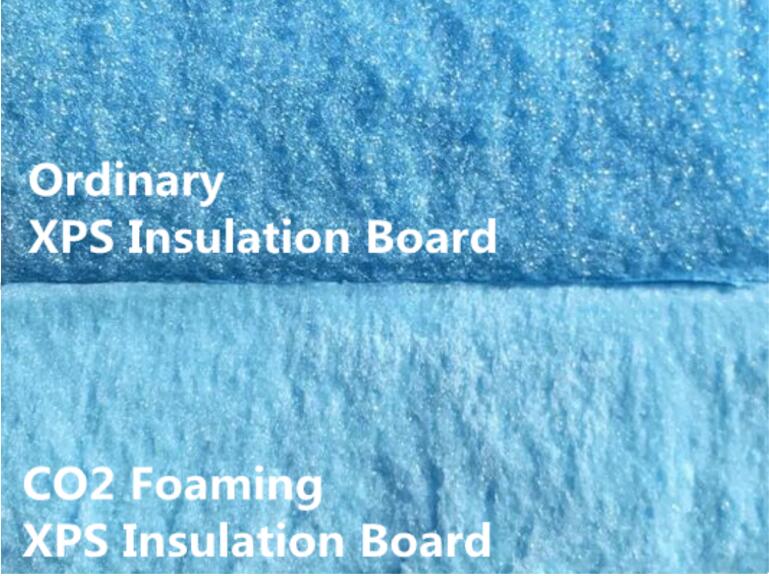Bakers make use of yeast as an effervescing agent. The yeast ferments with sugar in the dough and releases CO2 that gives the dough a foamy texture. In the same way, while producing XPS foam board a foaming agent is essential. When XPS insulation boards were designed in the past, multiple foaming agents were used. It includes –
Freon
Butane
Dimethyl ether
Ethyl alcohol
Liquefied petroleum gas
And more
Freon is the common foaming agent because it is controllable. Nevertheless, several manufacturers employ liquefied petroleum gas because it is the cheapest material. Both these foaming agents have their drawbacks. Freon is not eco-friendly and Petroleum gas is extremely dangerous. However, a decade ago CO2 foaming agent was used in producing XPS insulation board.
What is an XPS insulation board?

XPS insulation board is scientifically called Extruded Polypropylene foam. It is designed from polystyrene resin, polymers, and other raw materials. It is heated first and blended while simultaneously injecting catalyst and extruded consistently to form a solid foam plastic sheet. Polypropylene foam has an ideal structure of closed-cell honeycomb so it features –
Low water absorption
Good heat insulation
Low density
Great soundproof effect
Corrosion resistance
High-pressure resistance
Low thermal conductivity
Application of XPS insulation board –
Central AC ventilation ducts
Wall insulation
Roof insulation for steel structures and buildings
Floor moisturizing
Ground frost swell control
In military sector
Packaging materials
Shockproof materials
Thermal insulation materials
How does foaming work in the XPS insulation board production?
Foaming is a crucial process in the XPS insulation board production line. You can divide them into –
1.Physical foaming – In this process foaming agents like CO2, Nitrogen, Butane, and Pentane are injected directly into the polymer melt under high pressure. The pros of physical foaming are that the cost of the agent’s nitrogen and CO2 is relatively low, the method is pollution-free, and there is no residue, which hardly compromises the properties of the foaming plastic. However, there is a need for high technical skills, specialized injection molding machines as well as auxiliary equipment.
2.Chemical foaming – Chemical substances that crumble and generate heated gases that spread across the polymer melt. The chemical foaming can be done using an ordinary injection molding machine. It is appropriate for polymer resins, which melt at a specific temperature. The cost is high and also needs a clamping pressure device.
The processing technique of foam production includes foam injection molding and foam extrusion molding. These molding methods use supercritical liquids like nitrogen or carbon dioxide as a foaming agent. The polymer foams gain high-dimensional stability and are lightweight.
What is the difference between CO2 foaming and Ordinary XPS Insulation Board?
The insulation board is designed from thermal insulation material. There are the XPS [Extruded Polystyrene] boards using CO2 as a foaming agent, so-called CO2 foaming XPS insulated board. There is also the ordinary XPS insulation board called EPS [Expandable Polystyrene] and the GPS [Graphite Polystyrene]. All three forms XPS, GPS, and EPS have closed-cell type structures.
CO2 foaming vs. Ordinary XPS insulation board

Color
When used under the same color ratio, the CO2 foaming XPS insulation board reveals a lighter color than its counterpart.
Rigidity using hand pressure
When pressed hard the ordinary XPS insulation board surface reveals a dent and appears ruptured. This means, the board has thick skin with high breakability. As there are more cells on its surface its heat preservation effect is negligible and the board will sink easily as soon as it cracks.
The CO2 extruded polystyrene board shows less stiffness after applying hard pressure. It means the skin is thin, so preservation of heat is great. The panel will not sag even after pressure is applied as the stability of the cell structure is high.
Crystal reflection
The ordinary XPS insulation board is smooth and its fracture surface reveals more crystal reflection. As heat penetrates GPS insulation, reflection is 100X more because of Graphite particles. Alternatively, the CO2 foaming XPS extruded board has plenty of striation and uneven surface. Therefore the reflection is uneven.
Perm rating
Perm rating measures the ability of the product to allow moisture to penetrate through it. An average family generates four to six gallons of moisture inside daily. Products with a high perm rating eliminate the possibility of moisture damage. Unfortunately, when XPS insulation is used in wall assemblies its perm rating drops depending on the thickness.
XPS is a vapor retarder or vapor barrier, so needs to be used on the walls that get some sunlight or warmth in winter. Unfaced 1” thick CO2 foam XPS insulation board has a perm rating of 1 so is rated as semi-permeable. The ordinary XPS insulation board EPS has a perm rating high but is vulnerable to crumbling at edges therefore it is not used in wall sheathing projects.
R-value
The CO2 foaming XPS insulation panels have an R-value of 5 per 25mm, which offers better performance than the ordinary XPS insulation boards with an R-value of 4 per 25mm.
Thermal capacity & fire performance
The ordinary XPS insulation board softens at 73°C, which decreases its thermal performance capacity. At 100°C it starts to melt and thus thermal efficiency is completely lost.
Alternatively, CO2 XPS extruded panel is designed using non-crosslinked polymers. Therefore it is capable to reheat and remold. XPS is less pliable and rigid at 73°C. Around 98°C, it starts to melt. In extreme fire hazards, both spread and burn until the material is all consumed. Toxics are also released in the environment.
Why CO2 is a better foaming agent?
CO2 foaming agent is gaining acceptance and replacing hydrocarbon-based products. It offers the final products consistent and same cellular structure in every kind of polymer material including Polyethylene, Polystyrene, or Polypropylene. The cost is relatively lower. CO2 is inert, so the concerns about flammability are removed from the equation.
Manufacturing processes have found CO2 to be an excellent soluble in the polymer melts. As the foaming process is rapid gas consumption is low. It is non-toxic and non-flammable. Its potential for global warming is minimal as there is no ozone-depleting compound in it.
Feininger makes use of advanced technology in its CO2 foam XPS board production line. They have an in-house R&D, so their products can be applied widely in building insulation, civil engineering, cold storage, etc. without any worries. Give them a call!

 Español
Español Pусский
Pусский
